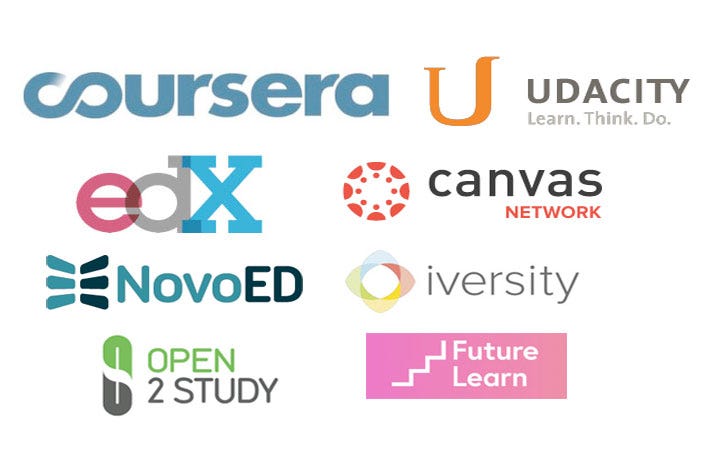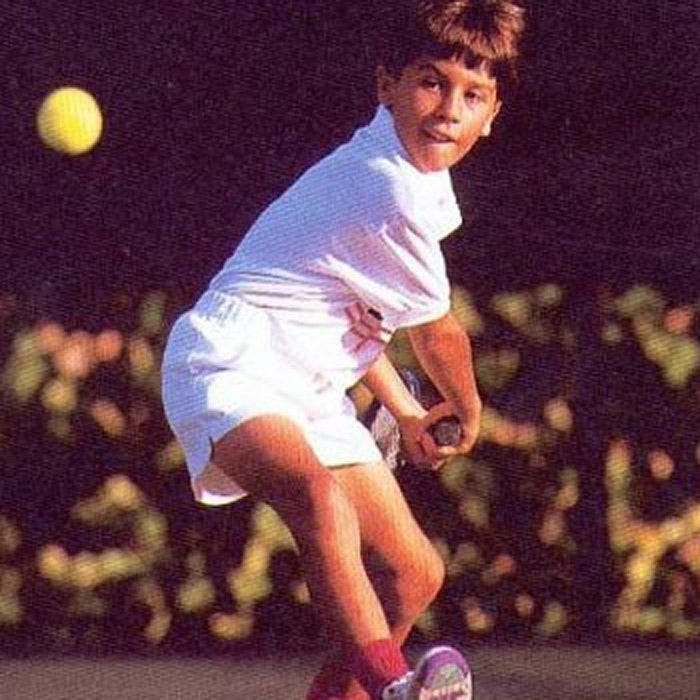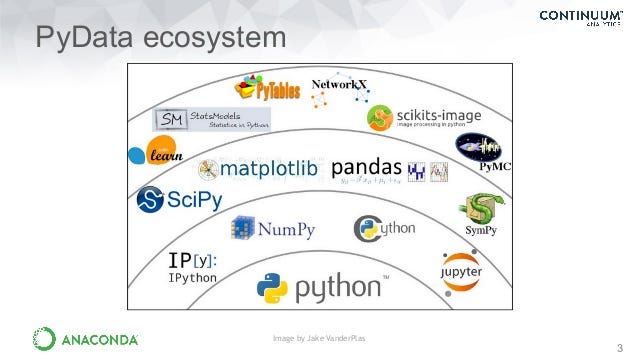Become the Rafael Nadal of Machine Learning
Become the Rafael Nadal of Machine Learning
One year back, I was a newbie to the world of Machine Learning. I used to get overwhelmed by small decisions, like choosing the language to code with, choosing the right online courses, or choosing the correct algorithms.
So, I have planned to make it easier for folks to get into Machine Learning.
I’ll assume that many of us are starting from scratch on our Machine Learning journey. Let’s find out how current professionals in the field reached their destination, and how we can emulate them on our journey.
I will illustrate how you can learn Data Science by drawing a parallel between how Rafael Nadal learned to play tennis, and how you can learn Machine Learning.
Commit Yourself — Stage 1


Nadal had sports talent all around him in his family. Inspired by them, he began his tennis journey at the age of 3.
For anyone starting out in Machine Learning, it’s important to surround yourselves with people who are also learning, teaching and practicing Machine Learning.
Learning the ropes is not easy if you do it alone. So, commit yourselves to learning Machine Learning — and find data science communities to help make your entry less painful.
Learn the Ecosystem — Stage 2


Rafael Nadal learnt the not only the rules of Tennis, but also the surrounding ‘ecosystem’.
He learnt about the different types of rackets, balls, court surfaces. He learned about the scoring in tennis. He enrolled himself for a tennis coaching.
Discover the Machine Learning ecosystem
Data Science is a field which has embraced and made full use of open source platforms. While data analysis can be conducted in a number of languages, using the right tools can make or break projects.
Data Science libraries are flourishing in the Python and R ecosystems. See here for an infographic on Python vs R for data analysis.
Whichever language you choose, Jupyter Notebook and RStudio makes our life much easier. They allow us to visualize data while manipulating it. Follow this link to read more on the features of Jupyter Notebook.
Kaggle, Analytics Vidhya, MachineLearningMastery and KD Nuggets are some of the active communityies where data scientists all over the world enrich each other’s learning.
Machine Learning has been democratized by online courses or MOOCs from Coursera, EdX and others, where we learn from amazing professors at world class universities. Here’s a list of the top MOOCs on data science available right now.


Cement the Foundation — Stage 3


Rafael Nadal learned the basic shots
Nadal’s coach taught him the forehand and backhand shots. This is the main foundation of tennis. Rafael could play the match competently with these basic shots.
Learn to manipulate data
Data scientists, according to interviews and expert estimates, spend 50 percent to 80 percent of their time mired in the mundane labor of collecting and preparing unruly digital data, before it can be explored for useful nuggets. - Steve Lohr of New York Times
‘Data Crunching’ is the soul of the whole Machine Learning workflow. To help with this process, the Pandas library in python or R’s DataFrames allow you to manipulate and conduct analysis. They provide data structures for relational or labeled data.
Data science is more than just building machine learning models. It’s also about explaining the models and using them to drive data-driven decisions. In the journey from analysis to data-driven outcomes, data visualization plays a very important role of presenting data in a powerful and credible way.
Matplotliblibrary in Python or ggplot in R offer complete 2D graphic support with very high flexibility to create high quality data visualizations.
These are some of the libraries you will be spending most of your time on when conducting the analysis.


Practice day in and day out — Stage 4
Rafael Nadal, when asked how much he trained:
“I train four hours a day, 210 days a year. If we add to that I play around 80 matches per year, each one lasting an average of two hours. That is 1000 hours playing tennis per year — and that is without counting the training days during tournaments.”


Learn Machine Learning algorithms and practice them
After the foundation is set, you get to implement the Machine Learning algorithms to predict and do all the cool stuff.
The Scikit-learn library in Python or the caret, e1071 libraries in R provide a range of supervised and unsupervised learning algorithms via a consistent interface.
These let you implement an algorithm without worrying about the inner workings or nitty-gritty details.
Apply these machine learning algorithms in the use cases you find all around you. This could either be in your work, or you can practice in Kaggle competitions. In these, data scientists all around the world compete at building models to solve problems.
Simultaneously, understand the inner workings of one algorithm after another. Starting with ‘Hello World!’ of Machine Learning, Linear Regression then move to Logistic Regression, Decision Trees to Support Vector Machines. This will require you to brush up your statistics and linear algebra.
Coursera Founder Andrew Ng, a pioneer in AI has developed a Machine Learning course which gives you a good starting point to understanding inner workings of Machine Learning algorithms.
Learn the advanced skills— Stage 5
Rafael Nadal learned to play advanced shots
Nadal, while concentrating on the fundamental play, also was introduced to the advanced shots. The shots that only professionals who play tennis day in and day out are able to pull off.


Learn complex Machine Learning Algorithms and Deep Learning architectures
While Machine Learning as a field was established long back, the recent hype and media attention is primarily due to Machine Learning applications in AI fields like Computer Vision, Speech Recognition, Language Processing. Many of these have been pioneered by the tech giants like Google, Facebook, Microsoft.
These recent advances can be credited to the progress made in cheap computation, the availability of large scale data, and the development of novel Deep Learning architectures.
To work in Deep Learning, you will need to learn how to process unstructured data — be it free text, images, or sounds.
You will learn to use platforms like TensorFlow or Torch, which lets us apply Deep Learning without worrying about low level hardware requirements. You will learn Reinforcement learning, which has made possible modern AI wonders like AlphaGo Zero.
Take your first step towards learning Machine Learning now!


- Install Anaconda and use Jupyter to write Python
Go through some Python tutorials and learn its fundamental data structures and syntax.
2. Surround yourselves with Data Science. Create account at:
● Kaggle and checkout the kernels written by top data scientists. Kaggle helps you to lubricate and establish a standard workflow to adhere to any Data Science Problem
● Analytics Vidhya: This website is a goto place for many data scientists. This site boasts of a 4 million unique visitors per month and has a very active community.
●Checkout YouTube pyData Channel. pyData is a conference arranged by the open source community to educate analysts with the latest developments in Data Science. This gives you
● Use podcasts to learn about the latest tools and technology in AI.
Podcasts is a great way to spend time on your daily chores, be it jogging, to arranging your closet or while commuting. If you are new to podcasts, download the Podcast addict app onto your phone.
Machine Learning — Software Engineering Daily | Every week Jeff interviews people from the heart of Data Science. It gives you the very rare early peek into what’s going on in silicon valley, helping you to get onto new techniques and technologies. It gives you so many new ideas to implement into your work. Can’t recommend this enough.
● Medium
Follow some of the Machine Learning publications here on Medium:
● Go to Coursera and Edx, and check out the various Machine Learning courses available.
I will end this post with this quote by Robin Sharma:
Every Pro was Once an Amateur.
Every Expert was Once a Beginner.
So Dream Big.
And Start Now.
Please comment below to tell us why you are planning to start your Machine Learning journey, and how you plan to do so.
And for all you Machine Learning pros, give us the nuances of what works and what doesn’t. Please comment below on how you started your Machine Learning journey and what expedited and hindered your learning process.
